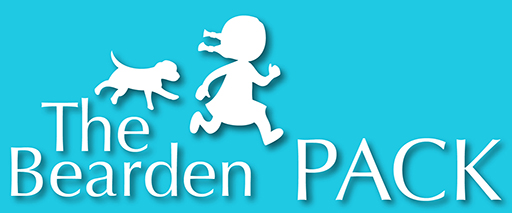Hip and elbow dysplasia can be one of the worse things to happen to a dog. Cases can extend from mild to severe. In mild cases pain killers may be a sufficient treatment. In sever cases the only thing that may help is surgery. I’ve heard of too many stories from people who have had dogs that experienced some form of dysplasia. Unfortunately for large breed dogs and even golden retrievers it is something they are susceptible to.
What is Hip and Elbow Dysplasia
Hip dysplasia occurs when the ball and socket do not fit (laxity) properly. The two bones will rub on each other causing a deterioration of the joint resulting in osteoarthritis. Unfortunately for you best friend it will cause pain and discomfort. Elbow dysplasia occurs when there are developmental abnormalities of the radius, ulna, and humerus. Similarly to hip dysplasia, elbow dysplasia will cause pain and discomfort. Dysplasia is genetic (nature) as well as caused by environmental (nurture) factors.
Are Golden Retrievers Susceptible to Hip and Elbow Dysplasia
I was recently asked if we can guarantee that a puppy won’t develop some form of dysplasia over the lifetime of the golden. My honest answer is no and no breeder can. We offer a health guarantee for the first year of life. Luckily we have yet had to deal with that. However, to say you can guarantee with 100% certainty that a golden will not get dysplasia is a fallacy.
Dysplasia is not a simple disease that can be diagnosed with just one simple test. We can’t just run a DNA test and pinpoint one genetic mutation that causes dysplasia. It is accustomed to do an OFA, or even PennHIP to test how well the parents hips and elbows are. Breeders are expected to use dogs that are above average. This is something we do, as well any reputable breeder should do.
However, just because parents may have great results, it doesn’t mean that puppies can’t develop it in the future. Dysplasia is a result of polygenic traits as well as nurture. Polygenic simply means seemingly unrelated traits can have an effect on a common trait. For example multiple traits can effect hair color. I’ve seen other breeders have puppies with bilateral hip and elbow dysplasia with both parents having excellent hip and elbows. Their grandparents even had excellent hips and elbow. Seemingly multiple good genes can mask one bad gene. Over time that bad gene can be expressed.
The reason for this mentioned occurrence is most likely from polygenic (traits skipping multiple generations) traits, as well as nurture. Nurture is how the environment affects a puppy, as well as all other external factors. Puppies who are overly exerted in their first year of life are prone to some form of dysplasia. Over activity harms their growing joints. In their first year of life their growth plates are still increasing in size. Too much running, and especially jumping affects their joints. Which is why most breeders recommend not to overly exercise them, take them on too long of hikes, or climb up too many stairs.
That does not mean we don’t take our puppies on walks. I slowly increase the length of walks that my dogs take over time. Around six months they start walking about a mile a day. Going on a lengthy hike of multiple miles may have a negative effect. However having a puppy not exercised at all, and growing too chubby can also have negative effects.
Another crucial factor to bring to mind is hormones. Specifically in golden and labrador retrievers a loss of hormones negatively affect hip and elbows when desexed early. A major change in hormone levels can cause growth plates to fuse early and wreak havoc on joints. That’s also why we recommend puppy parents to not neuter or spay their golden retrievers till two years of age. Waiting till two years of age assures that puppies growth plates and joints have grown properly before altering their hormones. Studies from UC Davis have discovered that golden retrievers who are spayed/neutered before 6 months have a 3-5 times chance of developing some form of dysplasia.
Slightly off topic, I relate dysplasia to arthritis in humans. Taller humans tend to develop more joint problems. Heavier set individuals tend to have more joint problems. The older we get the more joint problems we have. It’s the closest thing us humans can relate to a k-9 pack members.
Bottom Line
There are many factors to consider with dysplasia. If we consider as many as possible we can then minimize all the elements that result in dysplasia. If we neglect the factors then indeed it can crop up. Anyway, hopefully this is a helpful read. I’ll keep updating this page as other things come to mind, or if research changes in time.


Leave a Reply